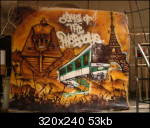A growing band of chemists is now trying to free the field from its artisanal roots by creating a device with the ability to fabricate any organic molecule automatically. “I would consider it entirely feasible to build a synthesis machine which could make any one of a billion defined small molecules on demand,” declares
Richard Whitby, a chemist at the University of Southampton, UK.
Even a menu of one billion compounds would encompass just an infinitesimal fraction of the estimated 1060 moderately sized carbon-based molecules that could possibly exist. But it would still be at least ten times the number of organic molecules that have ever been synthesized by humans. Such a device could thus offer an astonishing diversity of compounds for investigation by researchers developing drugs, agrochemicals or materials
People Involved:
“A synthesis machine would be transformational,” says
Tim Jamison, a chemist at the Massachusetts Institute of Technology (MIT) in Cambridge. “I can see challenges in every single area,” he adds, “but I don't think it's impossible”.
A British project called Dial-a-Molecule is laying the groundwork. Led by
Whitby, the £700,000 (US$1.2-million) project began in 2010 and currently runs until May 2015. So far, it has mostly focused on working out what components the machine would need, and building a collaboration of more than 450 researchers and 60 companies to help work on the idea. The hope, says Whitby, is that this launchpad will help team members to attract the long-term support they need to achieve the vision.
Bartosz Grzybowski, a chemist at Northwestern University in Evanston, Illinois, who has ambitious plans for a synthesis machine of his own.
Yuichi Tateno, an automation researcher at pharmaceutical company GlaxoSmithKline in Stevenage, UK, and a member of the Dial-a-Molecule collaboration. “The hardware has always been there, but the software and data have let it down,” he says.
Elias Corey, a chemist at Harvard University in Cambridge, Massachusetts, who formalized the rules of retrosynthesis in the 1960s.
Grzybowski has spent the past decade building a system called Chematica to address those problems. He started by creating a searchable network of about 6 million organic compounds, connected by a similar number of reactions, drawn from one of the main databases behind Reaxys. His team then spent years cleaning up the data — identifying entries that lack crucial information about reagent compatibility or reaction conditions.
FULL STORY IN NATURE









No comments:
Post a Comment